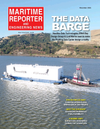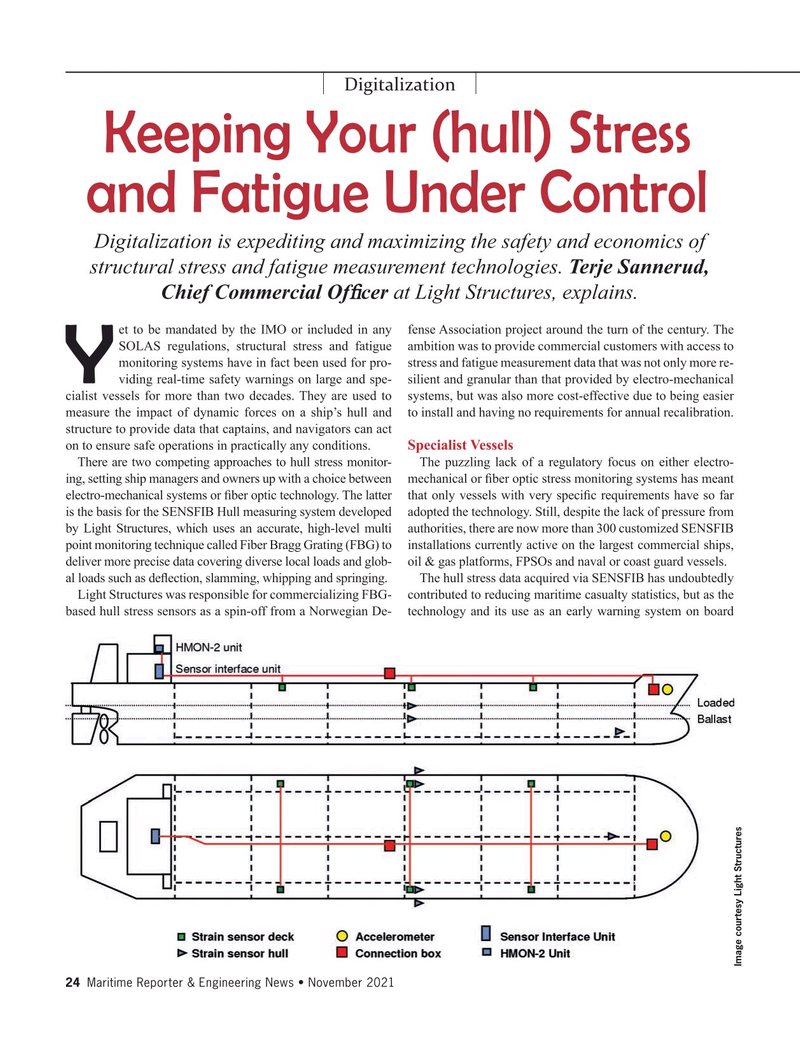
Page 24: of Maritime Reporter Magazine (November 2021)
The Workboat Edition
Read this page in Pdf, Flash or Html5 edition of November 2021 Maritime Reporter Magazine
Digitalization
Keeping Your (hull) Stress and Fatigue Under Control
Digitalization is expediting and maximizing the safety and economics of structural stress and fatigue measurement technologies. Terje Sannerud,
Chief Commercial Of? cer at Light Structures, explains.
et to be mandated by the IMO or included in any fense Association project around the turn of the century. The
SOLAS regulations, structural stress and fatigue ambition was to provide commercial customers with access to monitoring systems have in fact been used for pro- stress and fatigue measurement data that was not only more re-
Y viding real-time safety warnings on large and spe- silient and granular than that provided by electro-mechanical cialist vessels for more than two decades. They are used to systems, but was also more cost-effective due to being easier measure the impact of dynamic forces on a ship’s hull and to install and having no requirements for annual recalibration.
structure to provide data that captains, and navigators can act on to ensure safe operations in practically any conditions. Specialist Vessels
There are two competing approaches to hull stress monitor- The puzzling lack of a regulatory focus on either electro- ing, setting ship managers and owners up with a choice between mechanical or ? ber optic stress monitoring systems has meant electro-mechanical systems or ? ber optic technology. The latter that only vessels with very speci? c requirements have so far is the basis for the SENSFIB Hull measuring system developed adopted the technology. Still, despite the lack of pressure from by Light Structures, which uses an accurate, high-level multi authorities, there are now more than 300 customized SENSFIB point monitoring technique called Fiber Bragg Grating (FBG) to installations currently active on the largest commercial ships, deliver more precise data covering diverse local loads and glob- oil & gas platforms, FPSOs and naval or coast guard vessels. al loads such as de? ection, slamming, whipping and springing. The hull stress data acquired via SENSFIB has undoubtedly
Light Structures was responsible for commercializing FBG- contributed to reducing maritime casualty statistics, but as the based hull stress sensors as a spin-off from a Norwegian De- technology and its use as an early warning system on board
Image courtesy Light Structures 24 Maritime Reporter & Engineering News • November 2021
MR #11 (18-33).indd 24 11/4/2021 9:44:40 AM

 23
23

 25
25
